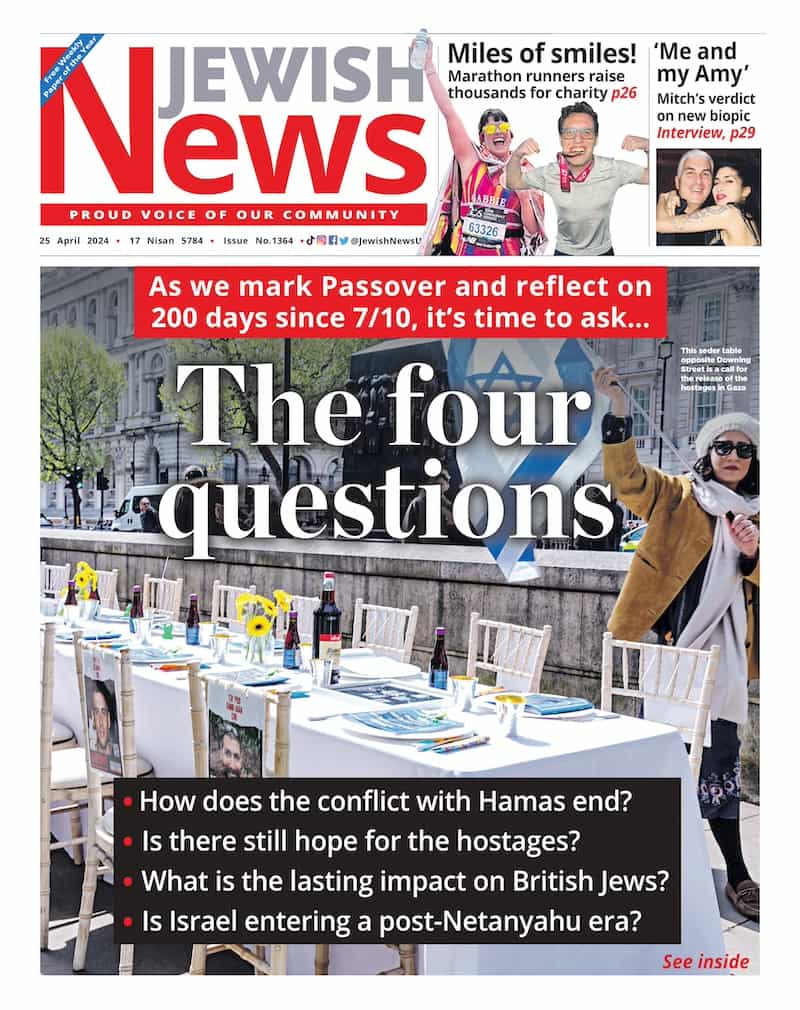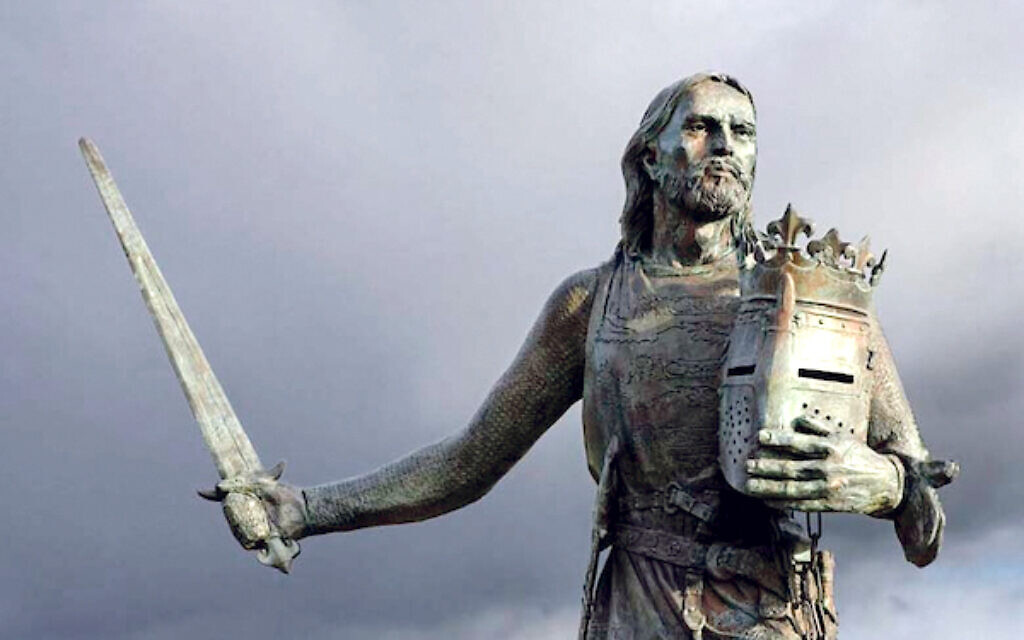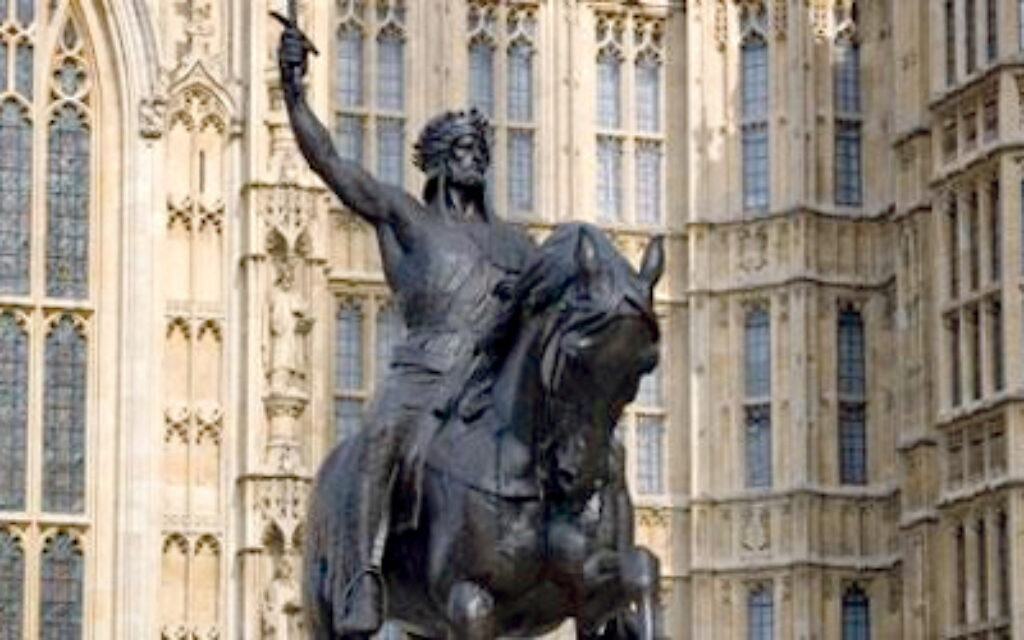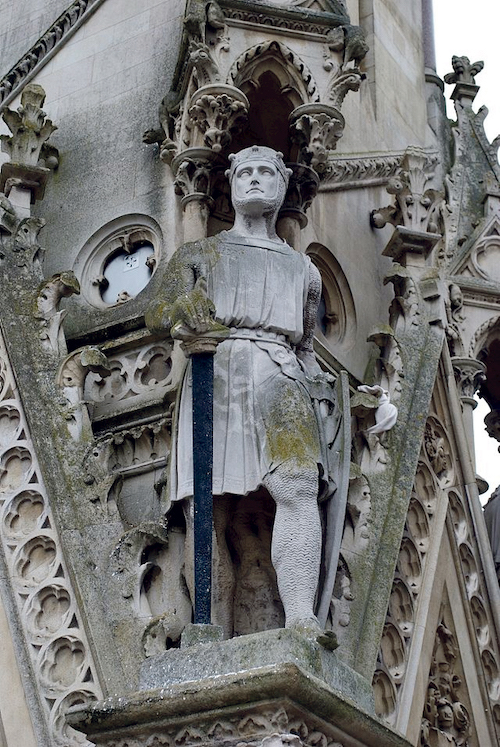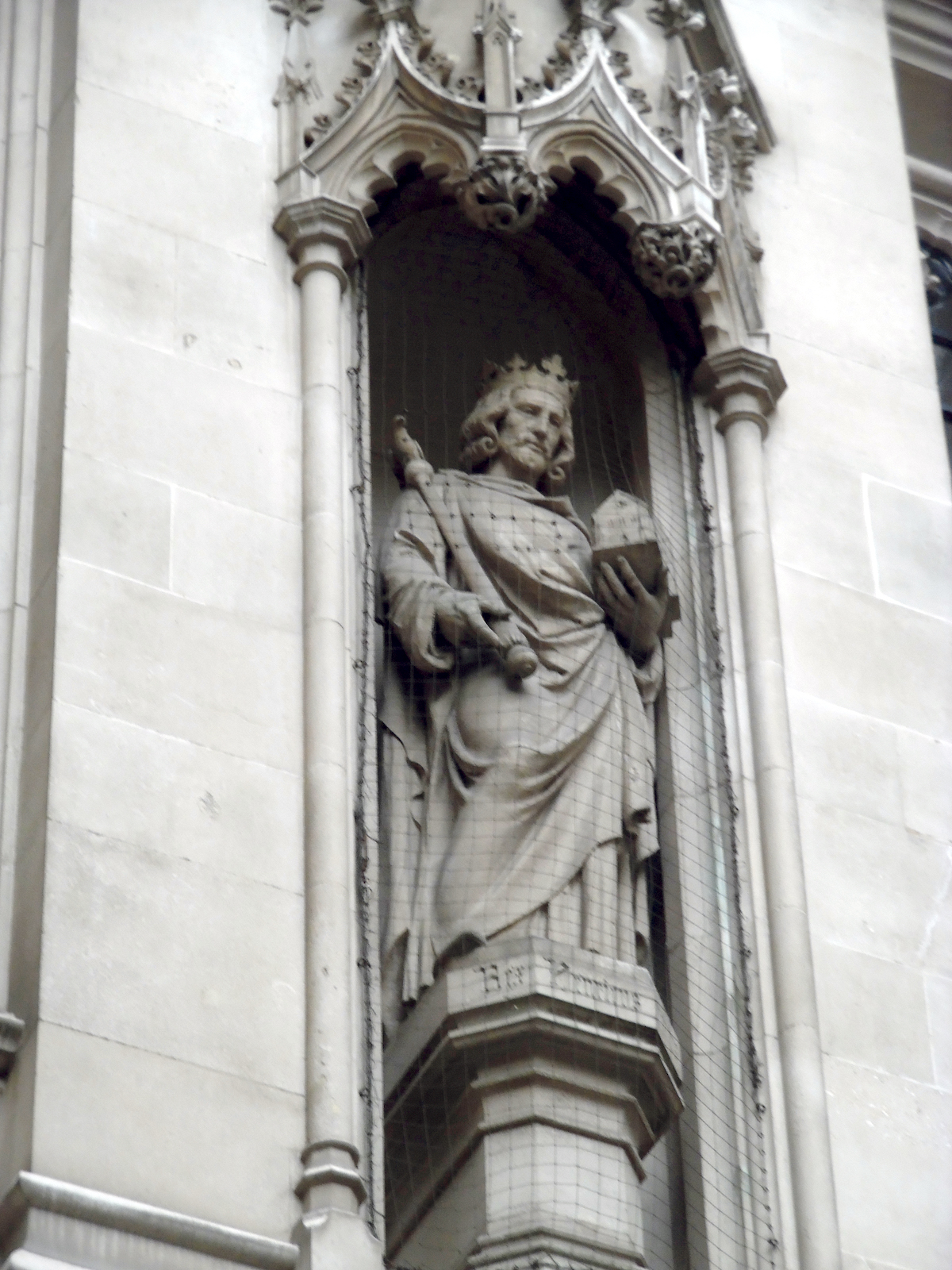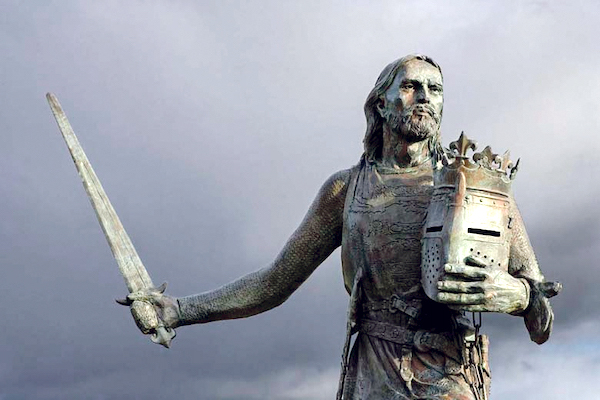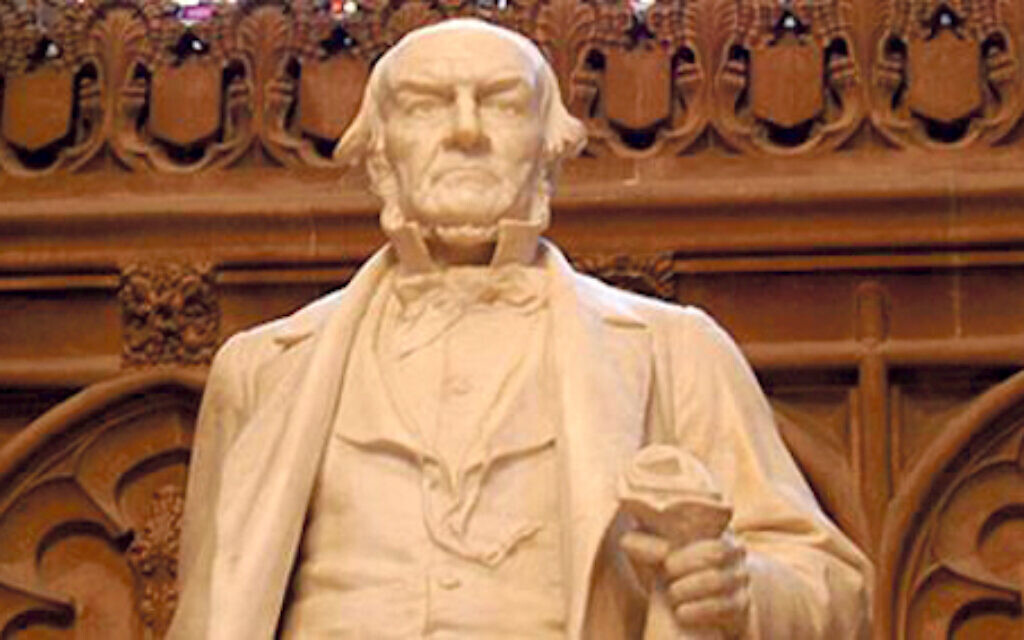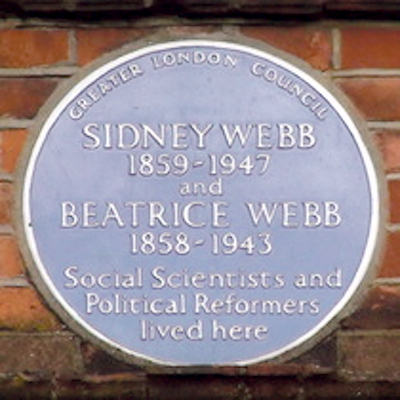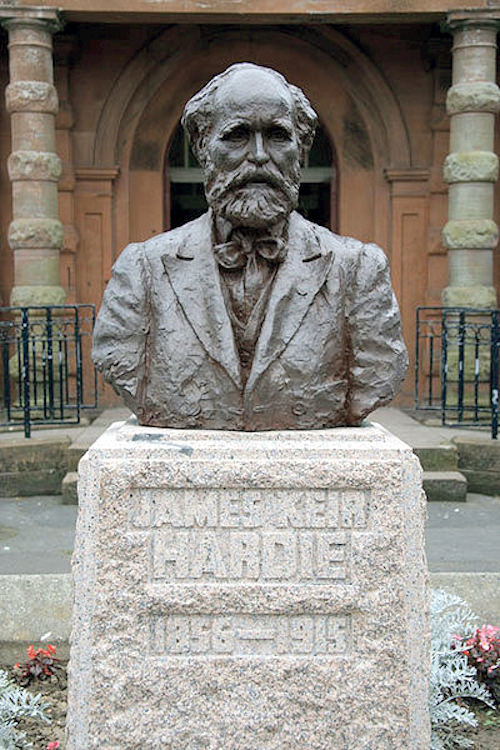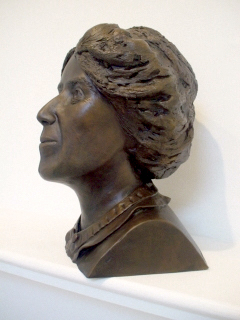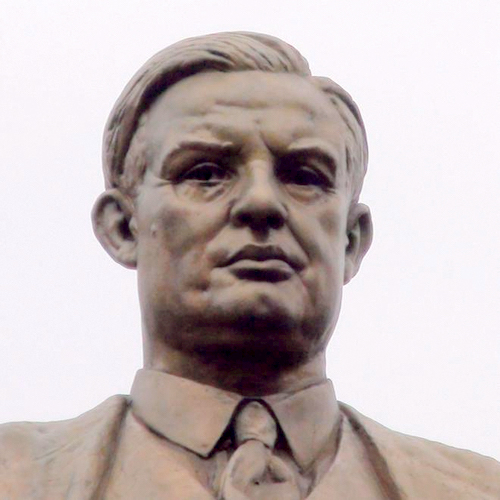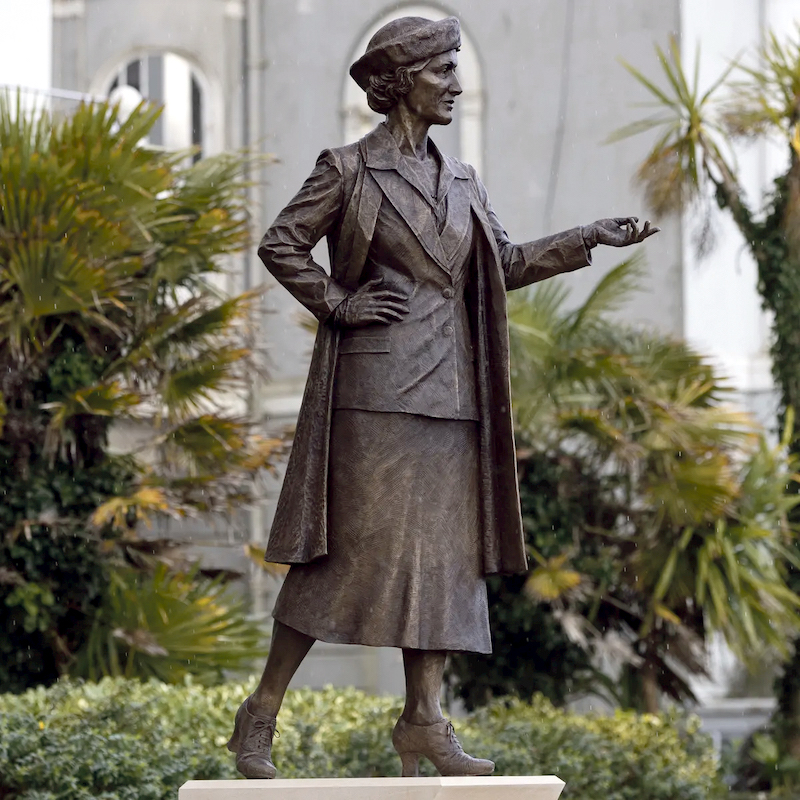Statues of liberty or subjugation?
As Britain re-examines its past, we scrutinise memorials – many erected very recently – to kings, politicians and others with antisemitic views
Richard the Lionheart – (King Richard I)
King Richard the Lionheart’s coronation sparked pogroms of unprecedented severity against English Jews.
On 3 September 1189, Jewish dignitaries bearing gifts for the newly crowned king were beaten and banished, sparking a false rumour that Richard had ordered the mass murder of England’s Jews.
Get The Jewish News Daily Edition by email and never miss our top stories Free Sign Up
A slaughter quickly ensued across London, spreading to other English cities including Stamford, King’s Lynn and Colchester.
On 16 March 1190, at the urging of Rabbi Yomtov of Joigney, approximately 500 Jews in York killed themselves rather than be forcibly converted or massacred.
By the end of the pogrom, York’s entire Jewish community had been eradicated. Richard I’s statue, pictured above, features prominently outside the Houses of Parliament.
Simon De Montfort, 6th Earl of Leicester
In 1231, Simon de Montfort expelled the small Jewish community from Leicester “in my time or in the time of any of my heirs to the end of the world”.
Justifying his actions as being “for the good of my soul, and for the souls of my ancestors and successors”, the move bolstered the 6th Earl of Leicester’s popularity.
The Jews of Leicester subsequently found refuge in the eastern suburbs, which were controlled by Montfort’s great-aunt Margaret, Countess of Winchester.
Today the Earl is commemorated in De Montfort University in Leicester. His statue features on the city’s Haymarket Memorial Clock Tower.
King Henry III
Another medieval monarch with a virulent hatred of the Jews, in 1245 King Henry III issued a decree prohibiting Jews from residing in most towns across England and imposed heavy taxes upon them.
This deprived England’s Jews of a significant source of their money-lending business, threatening their very existence.
This was followed by the Statute of Jewry issued in 1253, which was aimed at segregating the Jews and imposed on them the wearing of a badge shaped like the two tablets of the ten commandments.
The statue pictured is in King’s College London’s library.
King Edward I
By the late 1200s England’s Jewish population had reached around 3,000 people, with prosperous settlements in London, Norwich and Lincoln.
However, rising antisemitism linked to the blood libel, the Crusades and financial pressures resulted in King Edward I passing a law forbidding Jews from lending money for a living (usury).
England’s Jews became impoverished, with many hundreds also being hanged or imprisoned.
Finally, in 1290 under the Edict of Expulsion, Jews were banished altogether by King Edward I.
Jews did not return to England until the 1650s, when they were invited by Oliver Cromwell to resettle.
The statue pictured was unveiled in 2007 in Burgh by Sands, Cumbria.
William Gladstone
Four times prime minister William Gladstone has been memorialised across several statues, including this one in the central lobby of the Houses of Parliament.
However, the leader of the Liberal Party held antisemitic views, most notably towards his Conservative arch-rival, Benjamin Disraeli. In 1876, a failed uprising of Bulgarian Christians against Ottoman rule provoked a mass slaughter of the Christian population.
After Prime Minister Disraeli upheld Britain’s longstanding support for the Ottoman Empire, Gladstone accused him of harbouring dual loyalties, describing what he termed in a letter as “Judaic sympathies”.
Beatrice Webb
One of the best known leftist intellectuals of the late 19th century, Beatrice was instrumental in co-founding the Labour Party, whose constitution she helped to draft.
Nonetheless, in 1897, in a book co-authored with her husband Sidney, Jews were described as a “constant influence for degradation”.
She also lectured the Zionist leader Chaim Weizmann after the Hebron massacre in 1929: “I can’t understand why the Jews make such a fuss over a few dozen of their people killed in Palestine.”
No statue exists of Beatrice Webb, but this blue plaque is on the wall of her former Hampstead home.
Keir Hardie
From humble beginnings, James Keir Hardie rose to become one of Britain’s most notable politicians as the Labour Party’s first parliamentary leader.
Yet in the very month the party was established, Hardie publicly blamed the outbreak of the Boer War on “half a dozen financial houses, many of them Jewish, to whom politics is a counter in the game of buying and selling securities”.
The Labour Leader newspaper, of which Hardie was editor, also published numerous virulently antisemitic remarks stating that wherever there is trouble: “You may be sure that a hook-nosed Rothschild is at his games somewhere near the region of the disturbances.”
This bust of Hardie is outside Cumnock Town Hall in East Ayrshire.
Marie Stopes
A pioneering author and campaigner Marie Stopes founded the first birth control clinic in Britain.
However, her devotion to family planning derived partly from her obsession with eugenics and in 1935 she attended a Nazi-sponsored Congress for Population Science in Berlin.
She even sent Hitler a collection of love poems, declaring in 1942: “Catholics and Prussians /The Jews and the Russians/ All are a curse / Or something worse.”
Stopes became the first female academic to be appointed at the University of Manchester, and today there is a nationwide network of family-planning clinics named after her.
The bust of Marie Stopes pictured was unveiled in 2008 in Camden.
Ernest Bevin
Ernest Bevin was foreign secretary from 1945 to 1951, the most senior Cabinet member in Clement Attlee’s postwar Labour government responsible for implementing British policy around the establishment of the State of Israel.
In this position he went out of his way to prevent the entry into Mandated Palestine of Holocaust survivors, rejecting an Anglo–American commission’s proposal in 1946 for the immediate admission of 100,000 Jewish refugees from Europe.
Fellow Labour politician Richard Crossman is even said to have likened Bevin’s outlook as “corresponding roughly with The Protocols of the Elders of Zion”. This bust of Bevin is in Bermondsey, south London.
Nancy Astor
Theresa May last year unveiled a controversial statue of Nancy Astor, the first female MP to sit in parliament.
Installed in Hoe Park in Plymouth to commemorate the 100th anniversary of Astor’s election as a Conservative MP, the bronze was also visited by Boris Johnson.
At the time, the Campaign Against Antisemitism warned of her “appalling views”, which included labelling Jews the “killers of Christ” who were themselves to blame for antisemitism.
According to British diplomat Harold Nicolson, she also once told the MP Alan Graham: “Only a Jew like you would dare to be rude to me.”

Thank you for helping to make Jewish News the leading source of news and opinion for the UK Jewish community. Today we're asking for your invaluable help to continue putting our community first in everything we do.
For as little as £5 a month you can help sustain the vital work we do in celebrating and standing up for Jewish life in Britain.
Jewish News holds our community together and keeps us connected. Like a synagogue, it’s where people turn to feel part of something bigger. It also proudly shows the rest of Britain the vibrancy and rich culture of modern Jewish life.
You can make a quick and easy one-off or monthly contribution of £5, £10, £20 or any other sum you’re comfortable with.
100% of your donation will help us continue celebrating our community, in all its dynamic diversity...
Engaging
Being a community platform means so much more than producing a newspaper and website. One of our proudest roles is media partnering with our invaluable charities to amplify the outstanding work they do to help us all.
Celebrating
There’s no shortage of oys in the world but Jewish News takes every opportunity to celebrate the joys too, through projects like Night of Heroes, 40 Under 40 and other compelling countdowns that make the community kvell with pride.
Pioneering
In the first collaboration between media outlets from different faiths, Jewish News worked with British Muslim TV and Church Times to produce a list of young activists leading the way on interfaith understanding.
Campaigning
Royal Mail issued a stamp honouring Holocaust hero Sir Nicholas Winton after a Jewish News campaign attracted more than 100,000 backers. Jewish Newsalso produces special editions of the paper highlighting pressing issues including mental health and Holocaust remembrance.
Easy access
In an age when news is readily accessible, Jewish News provides high-quality content free online and offline, removing any financial barriers to connecting people.
Voice of our community to wider society
The Jewish News team regularly appears on TV, radio and on the pages of the national press to comment on stories about the Jewish community. Easy access to the paper on the streets of London also means Jewish News provides an invaluable window into the community for the country at large.
We hope you agree all this is worth preserving.
-
By Brigit Grant
-
By Laurent Vaughan - Senior Associate (Bishop & Sewell Solicitors)
-
By Laurent Vaughan - Senior Associate (Bishop & Sewell Solicitors)
-
By Laurent Vaughan - Senior Associate (Bishop & Sewell Solicitors)
-
By Laurent Vaughan - Senior Associate (Bishop & Sewell Solicitors)

